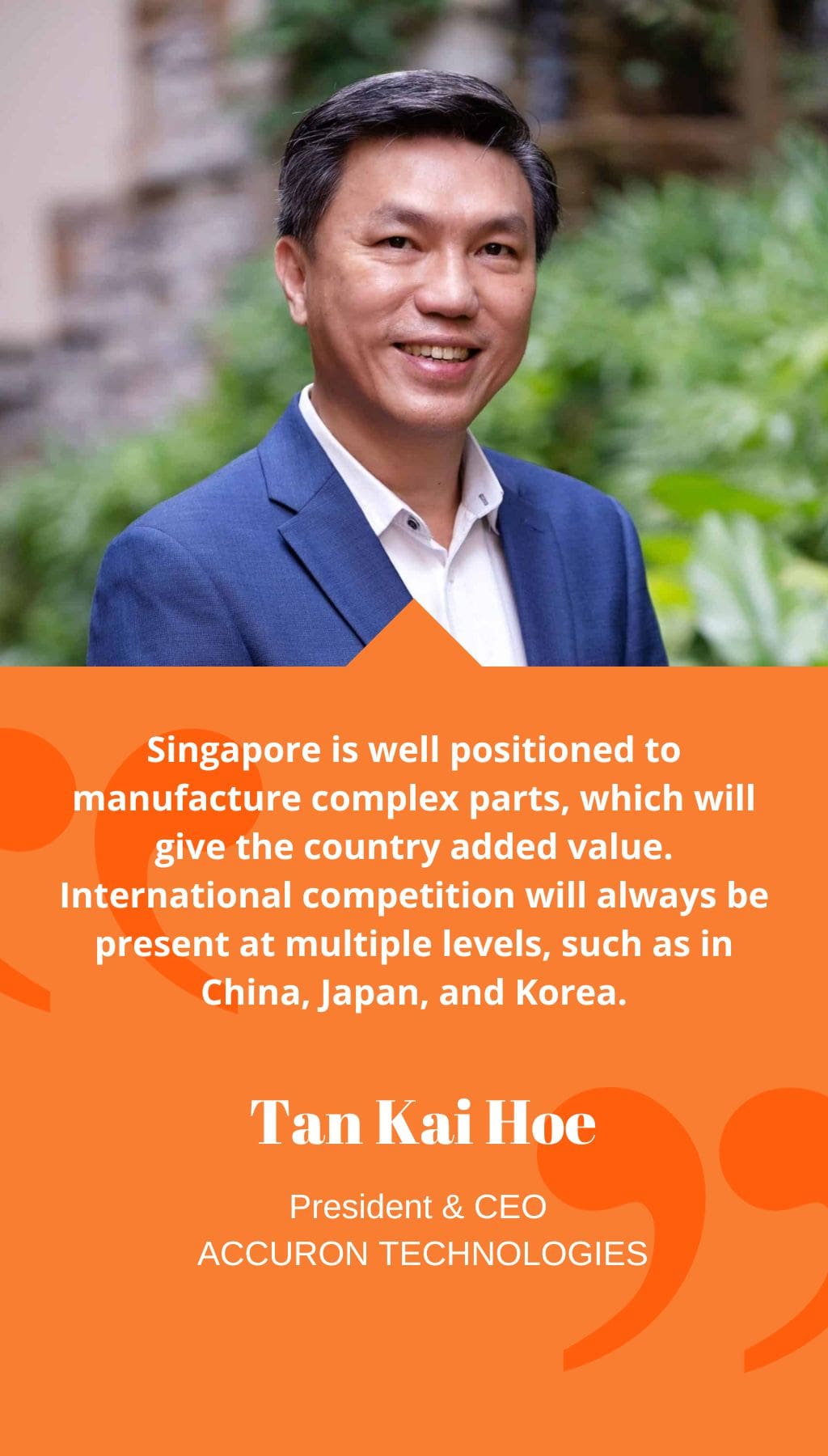
- Singapore | 27 May 2019

Can you walk us through your journey from being the Chief Executive of SPRING to becoming the CEO of Accuron Technologies?
I have been with Accuron Technologies for a year and a half now. Prior to that, I spent 25 years serving in the navy and then working in SPRING Singapore, eventually rising to the position of Chief Executive. Having worked in SPRING where we facilitated the growth of Singapore enterprises, I wanted to experience the opportunity of building up and growing a company directly for myself.
Singapore Aerospace Manufacturing (SAM) is a subsidiary of Accuron Technologies. Can you describe the relationship between Accuron and SAM in terms of aerospace?
Singapore Aerospace Manufacturing (SAM) was incorporated in 1981, and a few other companies were formed in the 1990s, including Dornier MedTech and Advanced Material Technologies. In 1999, there was a decision to group these companies under the Singapore Technologies Precision Engineering (STPE) umbrella. STPE later changed its name, finally becoming Accuron Technologies in 2005. SAM has also acquired other companies, including German-based Sitec Aerospace and KLSE-listed SAM Engineering and Equipment.
Today, Accuron has two main business groups – one is the SAM group and the other is the MedTech group. Accuron’s revenue stems from SAM (70%) and Medtech (30%). In turn, about 70% of SAM’s total business is aerospace, and the remaining 30% is devoted to industrial equipment and automation. Accuron is both a contract manufacturer as well as an OEM that designs and produces certain components such as linear actuators and valves. Some of our current operations are undertaken by subsidiaries which were acquired in the past decade. We continue to acquire companies to expand our service offering, capacity, and capabilities.
With a presence in Singapore, Malaysia, Thailand, China, and Germany, does Accuron Technologies have the intention to continue growing internationally?
Yes, Accuron Technologies will continue to pursue its growth internationally. Our main driver for business is not so much labor costs but rather access to the talent pool. Certainly, labor cost is something we have to manage, and there is a tendency to look for alternate locations to manufacture more cost-efficiently. But we are mainly looking for locations that are not too far from us geographically and carry the talent pool to serve our needs.
We will also continue to seek new partnerships and collaborations to jointly invest in growth. Aerospace is a capital-intensive area, but we are willing to take a long-term view and invest the required capital to drive new growth.
What do you think are the future trends and potential of precision engineering in Singapore and the region?
There is no choice for precision engineering but to go up the value chain. To own the designs is key to the segment’s continued growth. We will develop new techniques and methods for making parts more cost-effectively and efficiently. Singapore is well positioned to manufacture complex parts, which will give the country added value. International competition will always be present at multiple levels, such as in China, Japan, and Korea, which all have very sophisticated technologies. The goal is to continue to spearhead and be at the forefront of the precision engineering industry.
We will always watch out for disruptive technologies and techniques, such as additive manufacturing. It may take a while for this to truly become prevalent in the aerospace industry, but I think that change will take place swiftly. We will also see people making use of Industry 4.0, IoT, or simply automation to improve the manufacturing process.














